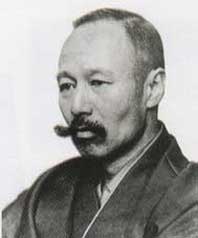

JPN/EAS 380
|
 |
 |
Text: The Wild Goose,XXX, trans.
Monday, Oct. 31st |
|
Readings: |
“Introduction,” (pp. pp. vii-xiv)
|
Questions to Consider: |
With this work, we begin to enter the modern age. Do you sense a sharp break with the past has taken place, or do you find consistency between this work and the previous works we have read? In its time (1911), one aspect of this book's popularity was the fact that it looked back at an earlier time (1880s), not long after the beginning of the Meiji period, when Western goods and customs were Mori Ôgai is considered one of the first truly "modern" Japanese authors. What is there that is "modern" about this novel? What still seems to belong to an earlier age?
|
Wednesday, Nov. 2nd |
|
Readings: |
Chapters 15-24 (pp. 91-166) |
Questions to Consider: |
The basic situation with which Ôgai deals is one familiar from many old kabuki dramas: the young wife finding herself sold as a mistress to a moneylender. How does this novel conform to the expectations of this situation and how does it go against them? Like many novels of the time, this work was originally serialized. Is there anything about the work that reveals this fact? Who is the narrator of this book? Is the narrator's explanation of how he came to know the events which occurred believable?
|
Back to Main Page |